Gladiolus seeds: what they look like, collection and cultivation
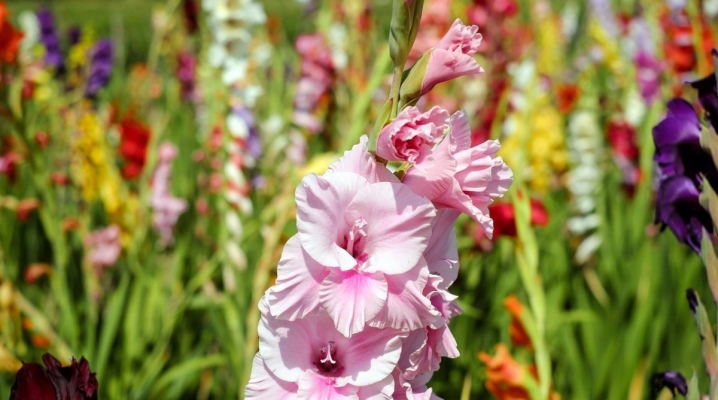
Gladioli are very beautiful garden flowers that look great in a flower bed or in a bouquet. You can grow gladioli in different ways: by sowing, by children, by dividing the bulb. Seed propagation is not the easiest method, but experienced gardeners who are not afraid of experimentation can try.
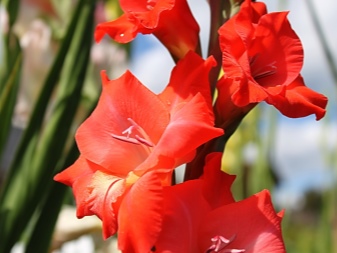
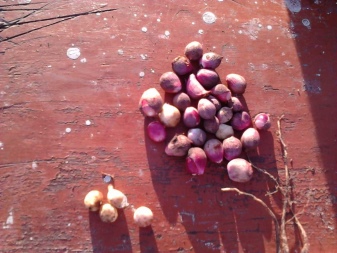
What do seeds look like?
As a rule, everyone knows the bulbs or babies of plants, but not every summer resident has to deal with the seeds of this culture. The seed looks like small flat, brown discs. The size of the seeds is a maximum of 2 mm. If you look closely at the shell, you can see the embryo through it. Typically, a seed box contains 180-200 such seeds.
Their feature is good preservation when stored at home.

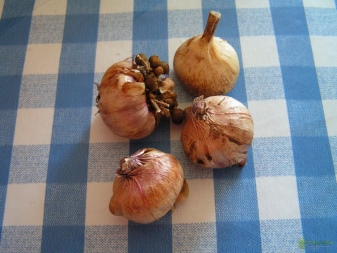
How to assemble?
Flowers grown on the site are not pollinated on their own. The pollen ripens later than the pistil opens. Pollination is possible only due to insects or wind rush, but there is little hope for natural factors, because then the crossing of unwanted specimens may occur. Therefore, it is better to take the pollination process into your own hands when propagating gladioli by seeds. Pollination can be done as follows.
Separate the stamens from the paternal specimens.
Spread the cut pieces on a piece of paper and leave to ripen.
When the pollen dries, carefully collect it.
Cut the anthers from the mother plants. Wrap the flowers in gauze and wait for the pistil to open.
Apply the father's pollen to the stigma of the pistil and wrap it back in the gauze bag.
As soon as the seed pods are formed on the flowers, the bags can be removed.
The seeds ripen in about 35-40 days. If the box is ready, then it begins to turn yellow and brown, sometimes cracks are visible on it. If forecasters reported an unexpected cold snap, but the seeds have not yet ripened, then the peduncles can be carefully cut off, put in a container with water and left at home. In room conditions, the box will ripen well, then it will need to be ripped off and placed for storage.
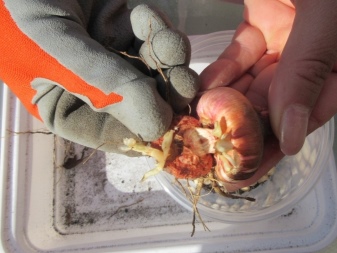
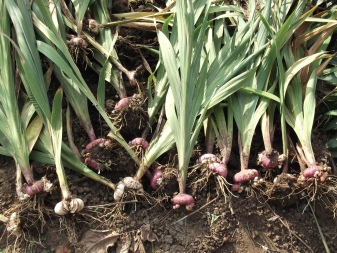
How to propagate?
Seed propagation is quite risky, laborious and costly, but some daring gardeners who are ready to experiment still prefer this method. The main problem with growing is that the varietal characteristics of the mother plant are often lost, and the result is unpredictable. Usually this method is carried out by breeders when writing scientific papers or for breeding new varieties. Sowing in open ground is possible if the following conditions are met.
Planting of seed takes place in February in a greenhouse. Here, young seedlings will be able to enrich themselves with strength for transplanting into open ground.
Before sowing, the seeds should be kept in a weak solution of sodium humate or in heteroauxin for 2.5-3 hours.
A favorable substrate for seeds is a mixture of humus and sand in proportions of 2: 1.
Sowing is done shallowly, from above the planting site is sprinkled with light soil.
Moistening of the sowing site is carried out simultaneously with fertilization, while solutions based on mineral preparations are used.


Planting can be carried out not only in a greenhouse, but also in boxes or in room conditions, however, high-quality lighting should be organized. If it is not possible to install lighting devices, then the seeds should be planted later than February. Further care does not differ much from growing other crops.
With the arrival of warmth, boxes with seedlings are placed in a greenhouse, where they are left open for the whole day, creating a shade for the first time in bright sunlight. If frost is likely, it is recommended to cover the plants overnight. So, in boxes or in a greenhouse, seedlings are grown until autumn, after which they are transplanted to a summer cottage.
Before the cold weather arrives, miniature bulbs should be dug up and stored.
It is customary to store them in gauze bags in a cool room. For good ventilation, it is recommended to hang the bags or put them in a box, folding them in a maximum of 4-5 cm. If the gardener has followed all the rules for seed propagation, then the next year the resulting hybrid plants can bloom.
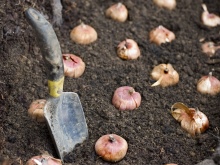
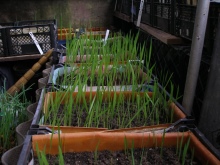
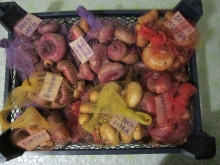
Care basics
When growing a crop, you should pay attention to the following points.
Watering. It is important to regularly moisten the flower bed. The recommended moistening depth is 30-35 cm; it is at this level that the roots are mainly located. Surface irrigation should be avoided, since such a procedure can provoke the active development of weeds and damage to the tissues of the root tubers. Watering is carried out in the amount of 1-1.5 buckets per 1m2. It is best to water the plant in furrows or aisles.
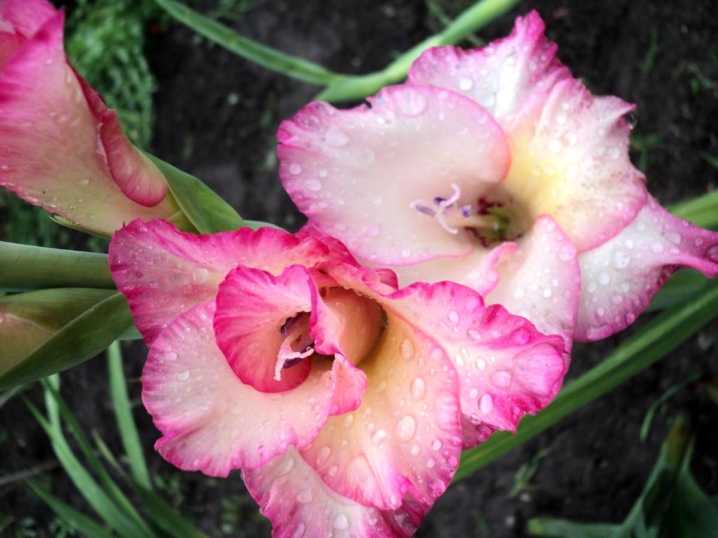
Loosening. After each watering, it is important to loosen the soil, this manipulation will prevent crust formation and will maintain good ventilation, which is very important for the roots, and an even distribution of moisture in the ground. After loosening, you should slightly spud the crop with soil and make furrows for irrigation. The plant needs loosening after precipitation, and on average, the procedure is carried out once every 10 days.
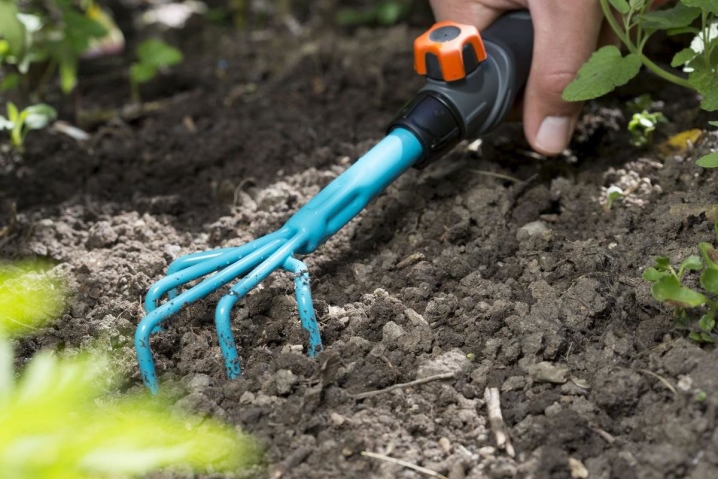
Mulching. This process protects plants from bad weather, retains moisture for as long as possible, and reduces the frequency of loosening. Experienced gardeners recommend using a mixture of humus, peat, compost, pine needles, grass or straw as mulch. Mulching is carried out with the growth of seedlings at a level of 10 cm.
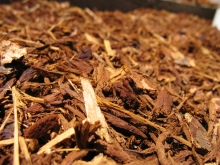
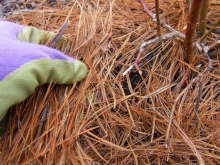
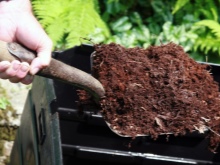
Weeding. With regular loosening and mulching, this representative of the flora needs only 3-4 times during the summer. The procedure is carried out as a prophylaxis against weeds. Try to prevent the development of weeds under the flowers, remove young shoots in time, since the presented culture does not tolerate the rivalry that is inevitable when adjacent to weeds. Timely removal of weeds will prevent the risk of pests and diseases.
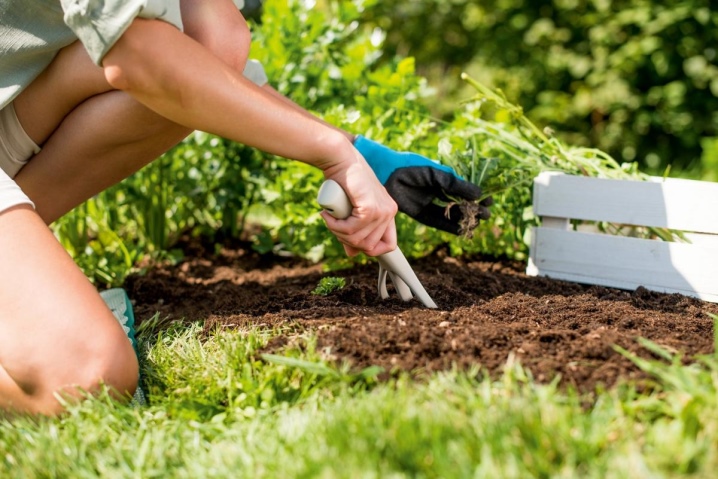
Top dressing. This plant accumulates nutrients in the bulb from the beginning of flowering to the end of the growing season. During the growing season, at the beginning of the development of the flower shoot, it is recommended to fertilize the culture with a mixture containing phosphorus and potassium. Phosphorus promotes abundant and lush flowering, and potassium is needed for the rapid formation of a large tuber. It is very important to avoid when feeding nitrogen-containing compounds, which slow down flowering and dull the development of tubers.
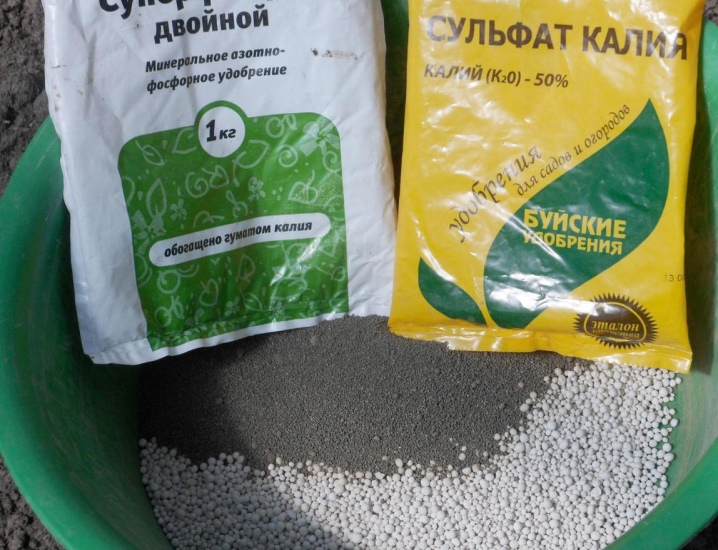
Preparing gladioli for planting is presented in the following video.







































































































The comment was sent successfully.